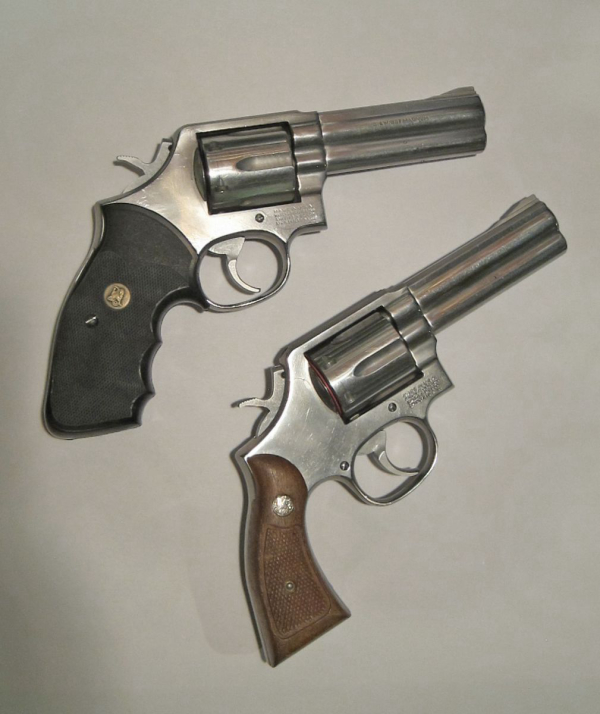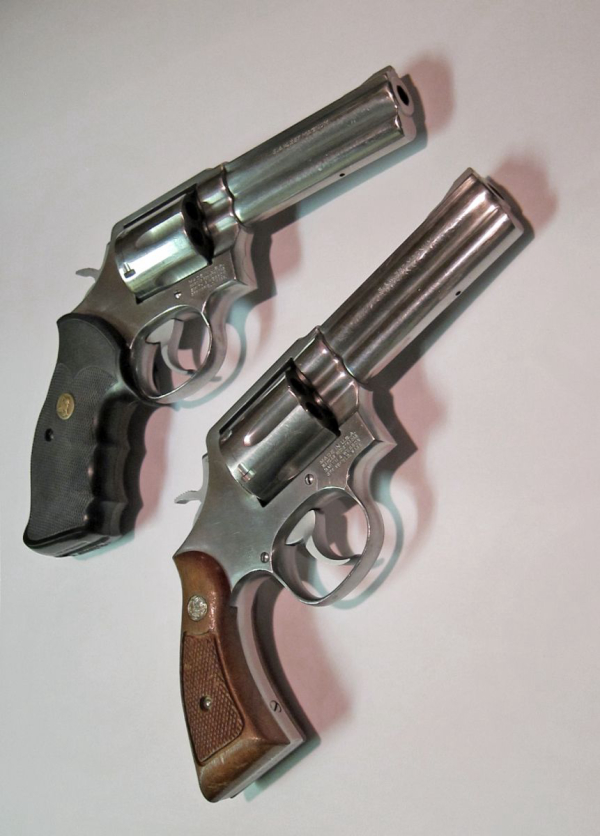#wheelgunwednesday
In the old days at Smith & Wesson – not the old-old days, but ending toward the “north end” of the 1950’s – the company used to name their guns.
Monikers included those like Military & Police, Hand Ejector, 357 Magnum, K-38 Masterpiece, Combat Masterpiece, Chief’s Special, Kit Gun and more. Finally, they elected to go with model numbers. The 357 Magnum became the Model 27, the Highway Patrolman was a Model 28, the Chief was a Model 36 (unless it was the Chief’s Special Airweight, then it was the Model 37), etc.
The Combat Magnum – a K-frame 357 Magnum with shrouded ejector rod – became the Model 19.
When agencies began to require qualification with magnum ammunition (if it was issued or you provided your own), the Combat Magnum began to suffer. It was never designed to take that sort of shooting.
Police revolvers weren’t like the military machine guns, battle rifles and the like; they expected them to be shot seldom. The military, aside from training, fired guns a lot only in battle and a good many were never expected to return.

This appears to have been the case until one of the police gunfight losses was determined to be due to a wadcutter shooter not being accustomed to shooting duty loads – or so the story goes. There’s some relevant debate that it was ever really an issue. The principal reason for police losses began with mindset. Without that mental preparation, “accuracy” wasn’t going to happen assuming the embattled officer even got the gun out into action.
And, like public administrators tend to do, law enforcement looked to burden the already strained back of uniformed officers with heavier guns so they could shoot Magnum ammo on the range. Like a good products provider, S&W didn’t argue with them. They instead designed a gun with a frame sized between the N- (a “45 frame”) and the K- (a “38 frame”), making this … a “41 frame?” In any event, they called it the L-frame.
With the full-length underlug on the barrel, the larger diameter cylinder, the stouter forcing cone/frame junction – and with the 38-frame’s grip size, a smart move – the new guns were called the Distinguished Combat Magnums.

I won’t discuss them here. The subject of this piece is the more utilitarian, fixed sight version of the L-frame. Provided from the factory with Magna-style stocks, not the “target grips” of the 586-686 guns, the new gun – 581 in blue or nickel and 681 in stainless – were dubbed the Distinguished Service Magnums.
Why “Distinguished?” In PPC, the Distinguished matches were shot with closer-to-factory-stock revolvers loaded with service 38 ammunition, provided by officials -- 158 grain round nose lead in lieu of the powder-puff flush-seated wadcutter of their practically “unlimited” division.
The K-38 Combat Masterpiece Model 14 had the slender barrel, no ejector rod shroud and was fairly light – and it was often used in Distinguished competition. The Model 19 six-inch was adopted by some PPC champs as it had the thicker “Magnum” barrel and shrouded ejector rod adding weight out front for stability on target.
The heavy barrel with full underlug of the Distinguished Combat Magnum added lots of weight out front and was my idea of the ideal gun for Distinguished PPC matches. The Distinguished Service Magnum was the same thing without snag-hazard, slightly more fragile adjustable sights.
It was a real hammer.
It shared the slightly wider, smooth faced (“Ranger”) trigger of the DCM; the hammer was slim, had no widened spur for thumb cocking. Shooting a “Distinguished” gun for competition or service didn’t require thumb-cocking.
I had some experience with the Distinguished Combat Magnums, having bought the first one I saw and then being issued a couple at my agency. I had no experience with the 581/681 fixed sight guns. I had lots of respect for them.

With sights that can’t be knocked out of line and the rugged reliability of the 686, the DSM is a first-rate gun for personal protection or field use. When our jail was taken under a county department of corrections they wisely selected the Model 681 for issue to correctional officers who transported prisoners to medical appointments and to court.
If you like S&W revolvers – and you’re a collector or a shooter – the Distinguished Service Magnum always deserves a look.
— Rich Grassi
